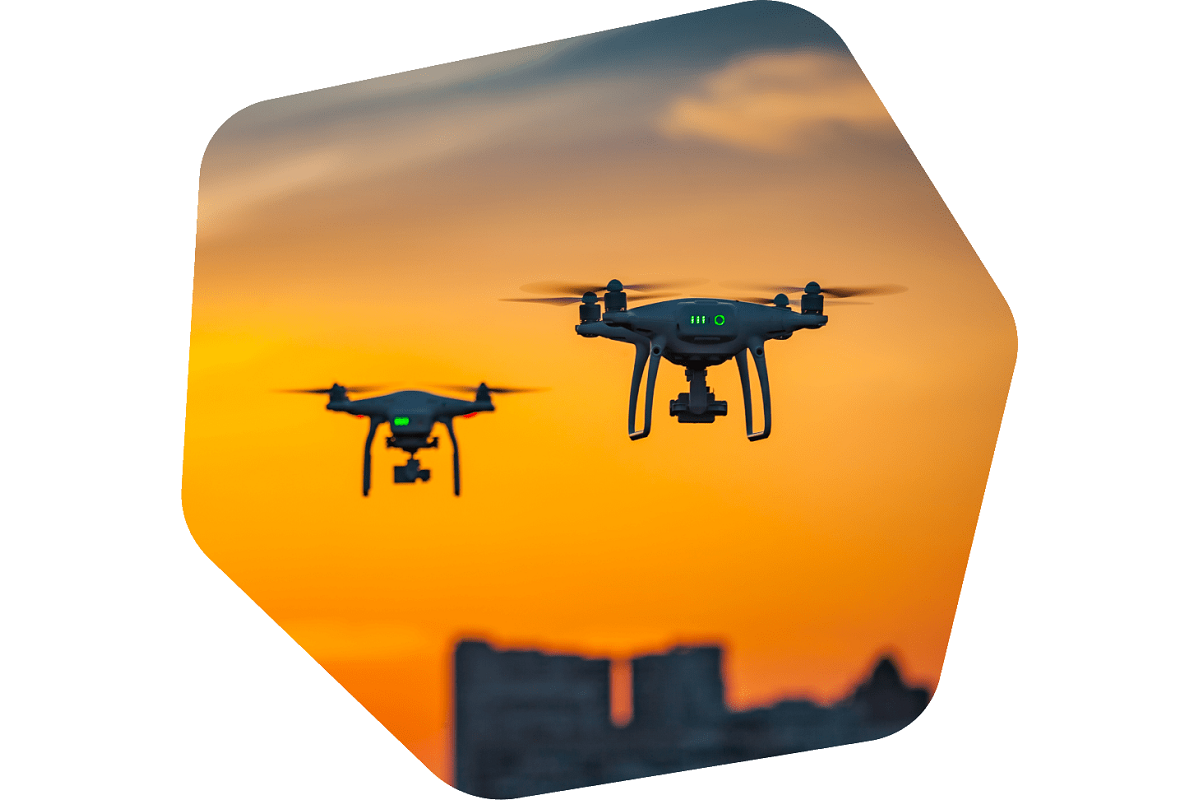St Petersburg University develops a hardware and software solution to protect drones from cyber threats

Scientists from St Petersburg University have created a security module that allows for the timely detection and elimination of various cyber threats that disrupt the work of drones. The development can be compared to immunity, which protects the drone from possible internal threats and fights them with built-in defence mechanisms.
Modern drones perform many different functions, from weather monitoring to cargo transport. Their software architecture is simple and open, especially if the drone is mass-produced. However, their vulnerabilities and lack of protection can lead to unplanned actions. For example, if the internal operating system is hacked, it is possible to cause the drone to drop cargo in the wrong place or even crash without reaching the target.
Earlier, Kaspersky Lab developed cyber immunity technology — an approach to building IT systems with built-in protection against various cyber-attacks. Cyber immunity is achieved by dividing an IT system into isolated parts and controlling the interactions between them. With this approach, most possible attacks on the cyber-immune system are ineffective because they do not reach the target and are under control.
Scientists from the Research and Education Centre "Mathematical Robotics and Artificial Intelligence" at St Petersburg University have adapted and improved cyber immunity technology to protect unmanned aerial vehicles.
Any electronic device can be embedded with some kind of malware that can manifest itself at the most inopportune moment and significantly affect the functioning of the device — a drone, for example. To combat this threat, we have updated cyber immunity technology into a full-fledged security module that is installed inside the drone and protects it from such threats in the same way that immunity enables a person to fight various viruses in the body.
Konstantin Amelin, Director of the Centre for Mathematical Robotics and Artificial Intelligence at St Petersburg University
The security module includes a Raspberry Pi board, which is common today, as well as a GPS tracker. This module receives the drone’s flight task, then builds an optimal route and can control the power supply for the entire drone. In the event of a cyber-attack, the security module can quickly detect and deal with it. For example, if malware tries to change the route, the technology will redirect it back to its previous mission. If necessary, it can even land the drone, remove the threat and continue flying.
In the event of a serious threat that cannot be quickly eliminated, the module can forcibly abort the flight by shutting down the drone’s motors and activating the emergency landing subsystem. In competition conditions, the emergency landing is simulated by a sound signal; in other cases, a parachute can be installed for this purpose.
The Research and Education Centre "Mathematical Robotics and Artificial Intelligence" was established at St Petersburg University on the initiative of a group of cybernetics scientists from the University and Presidential Physics and Mathematics Lyceum No 239. The centre brings together scientists from St Petersburg University working in the field of intelligent control, and mathematical and educational robotics. One of the centre’s projects was to create a new method of searching for people lost in the forest using drones.
As the University’s cyberneticists point out, the technology is autonomous and can withstand multiple attacks without the need for constant monitoring and control. The module itself will deal with emerging threats, although an operator can be involved in control if necessary. At the same time, the design of the development will be adapted so that it can be easily installed in any unmanned aerial vehicle: from a quadcopter to an aircraft-like drone.
The scientists from St Petersburg University have created more than 40 prototypes of such modules, which will be presented at the Archipelago 2024 design and education intensives in engineering competitions on the cyber autonomy of drones.
St Petersburg University, the oldest university in Russia, was founded on 28 January (8 February) 1724. This is the day when Peter the Great issued a decree establishing the University and the Russian Academy of Sciences. Today, St Petersburg University is an internationally recognised centre for education, research and culture. In 2024, St Petersburg University celebrates its 300th anniversary.
The plan of events during the celebration of the anniversary of the University was approved at the meeting of the Organising Committee for the celebration of St Petersburg University’s 300th anniversary. The meeting was chaired by Dmitry Chernyshenko, Deputy Prime Minister of the Russian Federation. Among the events are: the naming of a minor planet in honour of St Petersburg University; the issuance of bank cards with a special design; and the branding of the aircraft of the Rossiya Airlines to name just a few. To mark the 300th anniversary of St Petersburg University, a postage stamp depicting the Twelve Collegia building and the monument to Count Sergey Uvarov was issued.
By the decision of the Governor of St Petersburg Alexander Beglov, 2024 is a year of the 300th anniversary of St Petersburg University in St Petersburg. On the day of the University’s 300th anniversary torches were lit on the Rostral Columns on the Spit of Vasilyevsky Island. St Petersburg University flags were raised on the Palace Bridge. The city public transport was decorated with the University’s symbols. New tourist maps will feature the locations of the University buildings, with thematic and historical materials about the University placed nearby. During St Petersburg’s City Day celebrations in May 2024, St Petersburg University will be a participating venue. The traditional ‘Scarlet Sails Festival’ will also be dedicated to the anniversaries of St Petersburg University and the Russian Academy of Sciences. Additionally, the University has launched a website dedicated to the upcoming holiday. The website contains information about outstanding University staff, students, and alumni; scientific achievements; and details of events held as part of the celebration of the 300th anniversary of the University.

